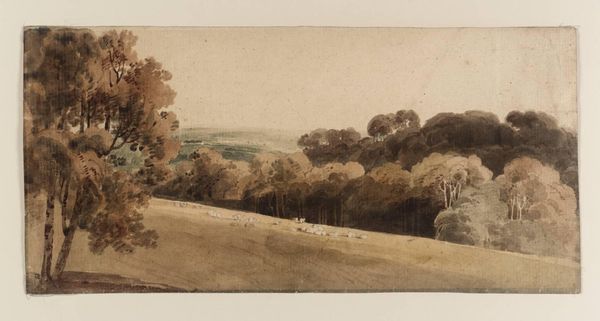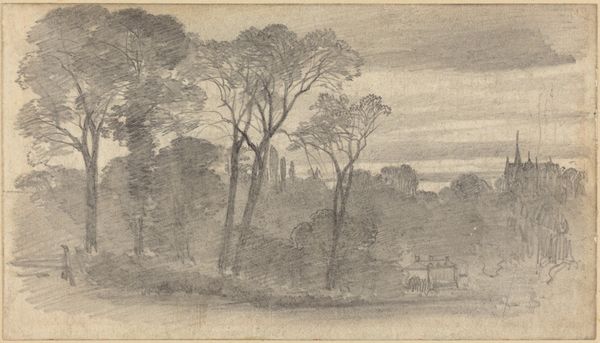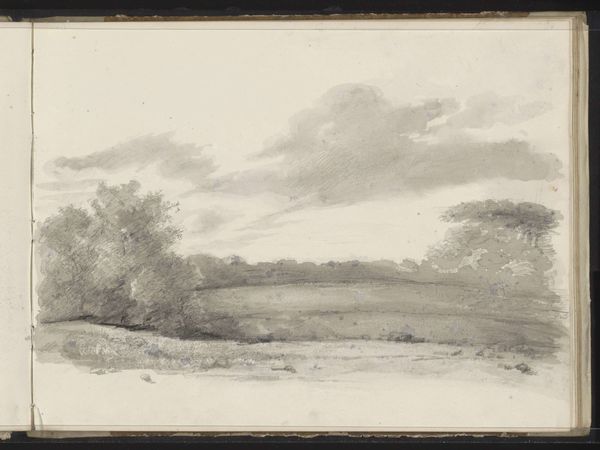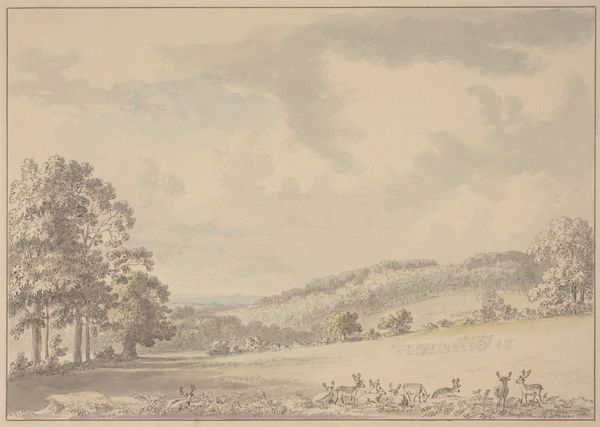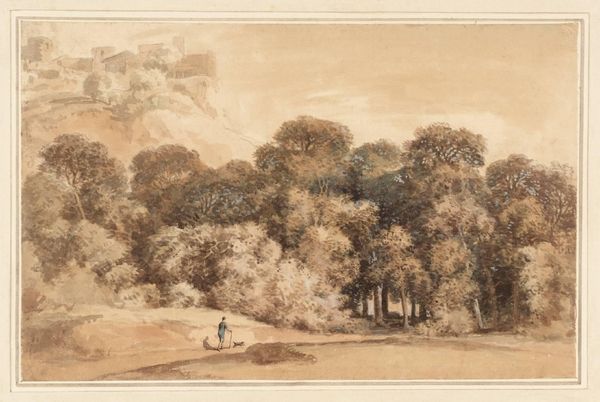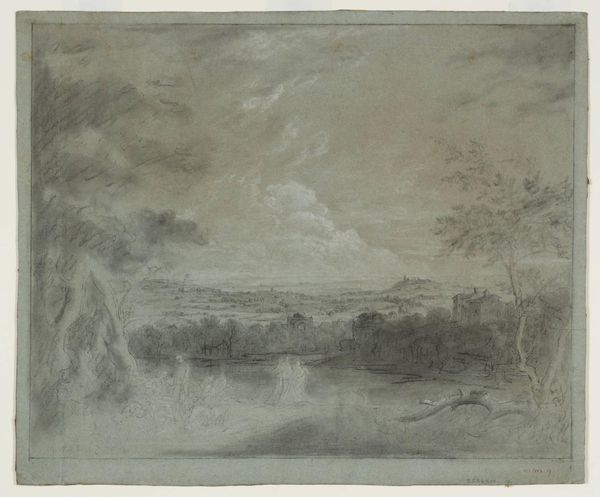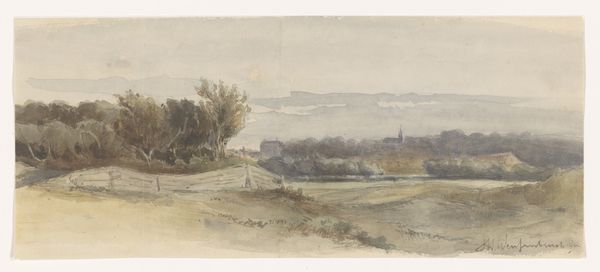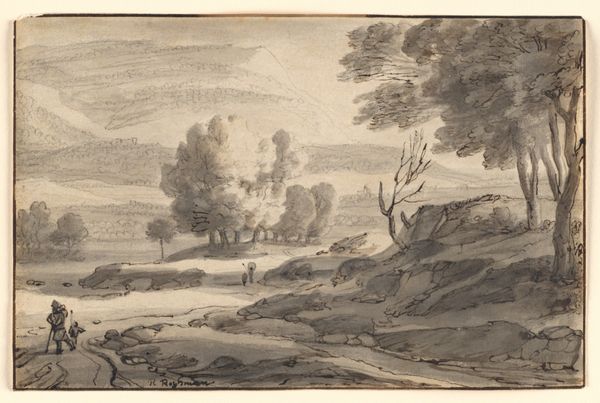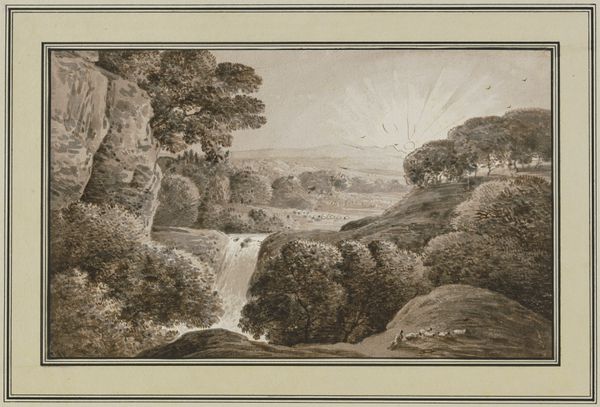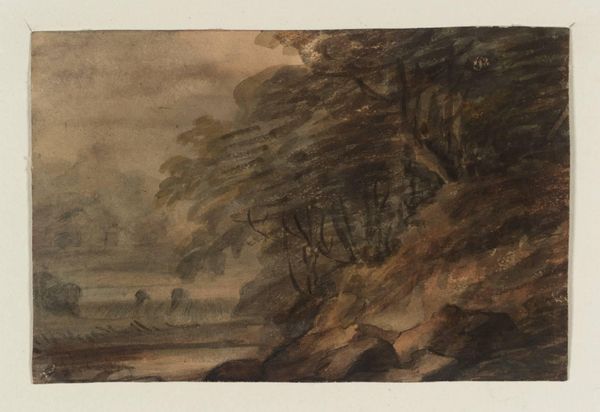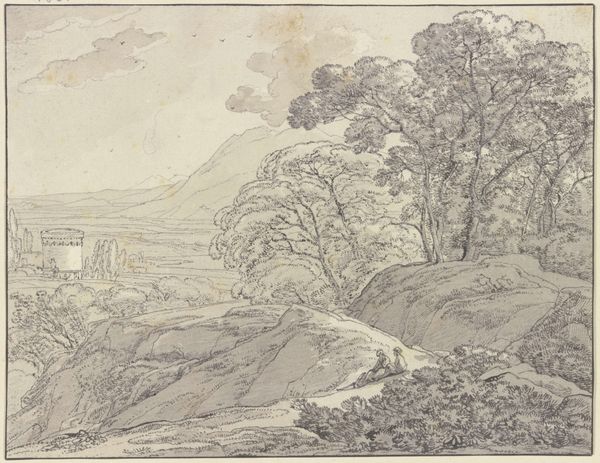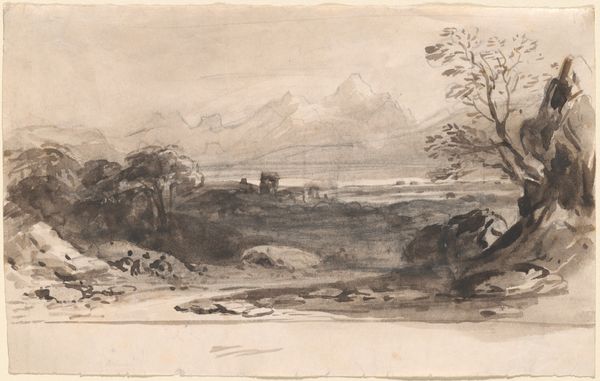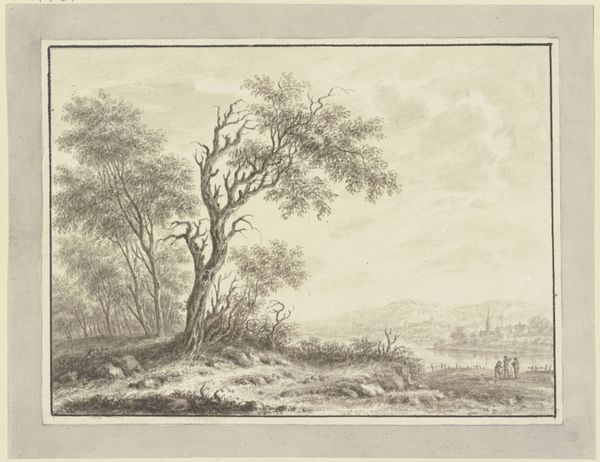
drawing, watercolor, ink
#
drawing
#
baroque
#
landscape
#
charcoal drawing
#
oil painting
#
watercolor
#
ink
#
genre-painting
#
watercolor
Dimensions: 22.1 x 19.2 cm
Copyright: Public domain
Curator: Welcome. Today, we are looking at a piece called "Landscape with a Wayfarer," attributed to Adam Elsheimer. Editor: It has such a muted palette; browns, grays, very subdued. Immediately gives me a sense of quiet melancholy, the landscape itself seems almost to be sighing. Curator: That mood, I think, connects to Elsheimer's historical context. Landscapes were gaining prominence, mirroring shifting societal views on nature, but were they simple depictions of idealized locales or reflections of a rapidly changing world? The figure walking through seems like an answer to those questions, in his solitude. Editor: True, and I wonder about the materials at play here. Given the details in the rendering, I’d venture that this might be watercolor and ink, but how were these materials sourced and perceived at the time? The accessibility of pigments surely dictated the wider production and consumption of such works. It has to make you wonder about the labor to grind, mix and produce, which is essential. Curator: Certainly, and in addition, this work reveals how patronage shaped artistic choices. Collectors of landscapes, and paintings featuring scenes of every-day life, were beginning to emerge in different countries throughout Europe, influencing artists to produce art that they could connect to through these scenes. It highlights how Elsheimer negotiated the artistic demands of his patrons while pushing genre conventions of his period. Editor: I think the perspective—the sharp detail softening into hazy distance—speaks to his skills as a technician and that artistic background. It pushes against some "high art" standards by turning to a scene with an anonymous figure to center stage. This makes the landscape not just a backdrop, but an active element in the story of human endeavor. Curator: A great observation. The landscape itself mirrors the man's internal state or journey, doesn’t it? These everyday landscapes, like the smaller scale of the artwork itself, reflect the change of focus onto ordinary life. Editor: Exactly! The choice of common materials, too, is of consequence; perhaps Elsheimer challenged hierarchical structures within the artistic world, suggesting profound artistic meaning lies within familiar media, familiar figures and landscapes. Curator: It appears that it has all these meanings simultaneously, depending on the lens with which you choose to explore its context. Editor: An insightful final thought. It reveals layers beyond its surface to anyone who might approach and contemplate.
Comments
No comments
Be the first to comment and join the conversation on the ultimate creative platform.
